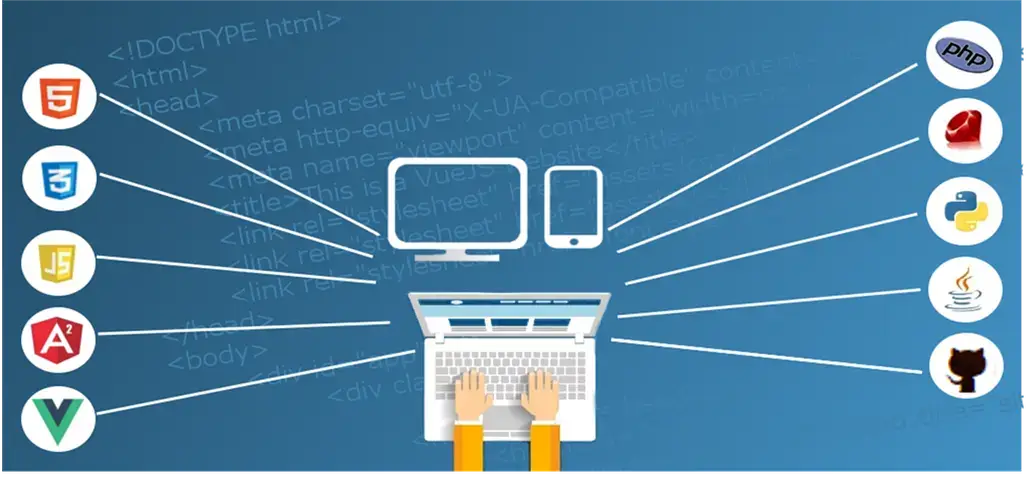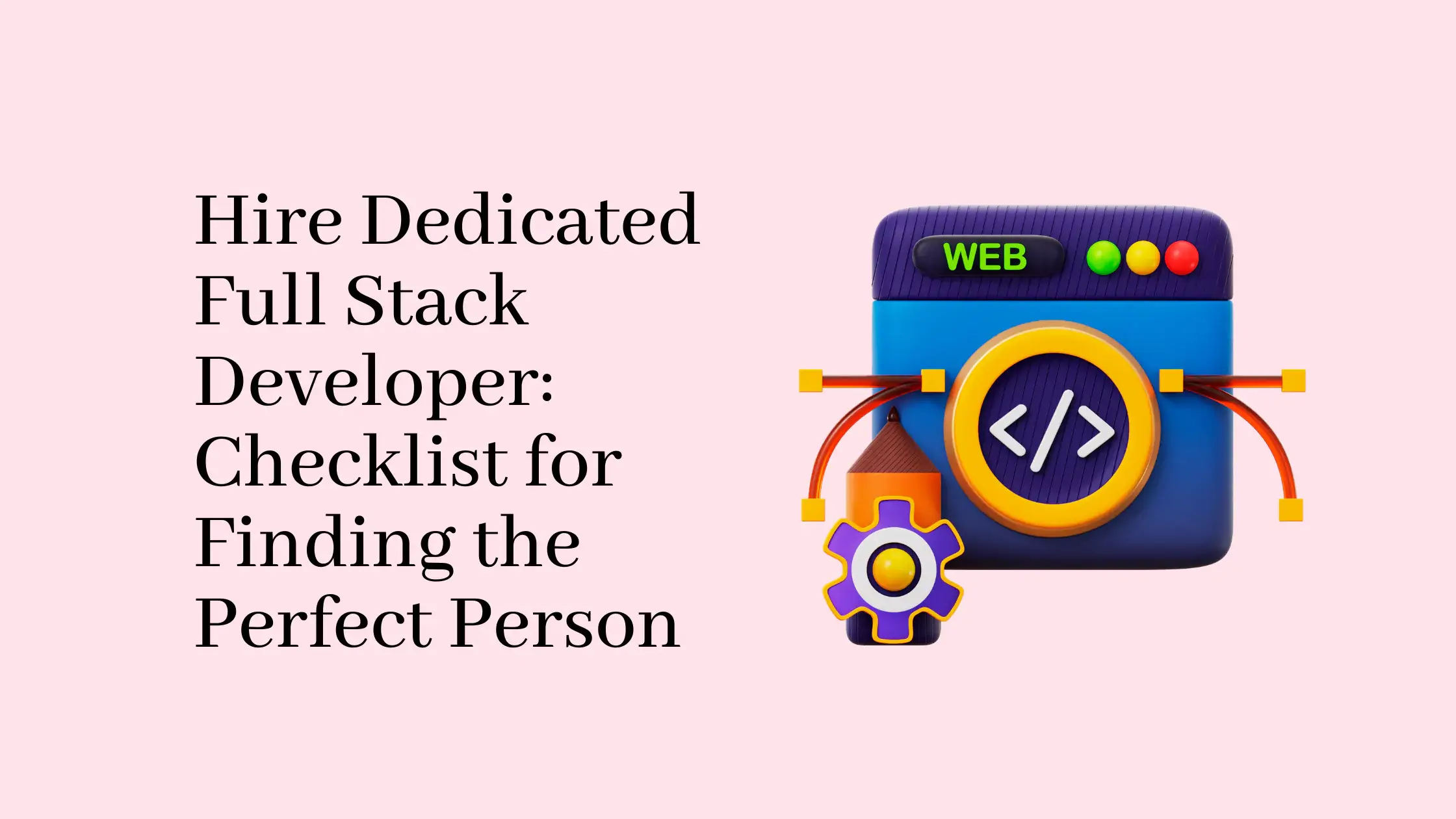
This article is part of our recruiting checklist series, in which we offer advice on how to hire dedicated full-stack developers.
Full-stack developers are all-rounders; they’re dedicated developers who, in principle, can work across the frontend development and the backend development to create a minimal viable product (MVP) without needing further help.
They’re a big topic in the tech world and a contentious one. Even though a staggering 24% of developers identify as Full-Stack Developers (according to our 2018 Developer Skills Report), the IT world is divided on what full-stack implies.
You may get a sample of the debate by clicking here. Also, save this article for later if you want to read more about the ongoing dispute. Because it’s a loaded term, it’s important to know the history before diving into the hiring process.
Otherwise, we’ll focus on the closest consensus definition of the role, based on a literature assessment of the top 5 most cited definitions available online, for the sake of this checklist:
What is Full-stack development?
Full-stack development is a process that tackles all stack layers, resulting in a comprehensive, deployable solution to business needs.” Stack engineers have extensive familiarity with all stack layers and skills in a few. In a given stack, they should render a minimal viable product.
Who is a Full-stack developer?
A full-stack developer can work on both the front and back end. Although this individual needs to be better-versed in a specific development, his understanding is sufficient to perform the task satisfactorily.
Note that each organization (and even project) has its preferred stack of technologies depending on the project requirements. Taking that into consideration, here are a few things to look for in a Full-Stack Developer:
Expertise
- Self-sufficient: capable of autonomously designing, implementing, and producing an MVP (minimum viable product).
- Stack match for your team: familiar with your tech stack and knowledgeable about the layers your team requires the most.
- Comfortable thinking at a high technical level: understanding how the codebase’s many components interact and best building around its requirements.
- Understands technology beyond their expertise stack: can advise on the most effective stack to use on a project, even if it isn’t in their toolbox.
- Promotes best practices; within a product’s tech stack by combining information from the codebase’s frontend and backend ecosystems.
- Synced on methodology: At ease with your team’s preferred development style (e.g., agile methodology, waterfall, and so on)
- Good mentor: Can draw on a broad range of technical expertise to assist subteams (e.g., frontend and backend) in producing more unified work.
- Strong technical communication abilities, including communicating successfully with frontend, backend, and DevOps teams.
- Team player: works well with a wide range of technical stakeholders.
- Humble: eager to learn from and listen to their coworkers’ opinions, particularly those with different specialties.
Soft Skills
- Lifelong learner; is committed to continuing their education to stay current with new technology.
- Problem-solver: At ease, delving deep to solve problems with little or no assistance.
- Self-starter: Demonstrated ability to manage their workload and find issues to address.
- Global thinker: Able to comprehend a project’s aims and how people will use it.
- Agnostic and objective: Understand that the optimal solution is based on the project’s requirements, not what they’ve done previously.
From both a technical and end-user standpoint, a strong product owner is passionate about the feature or product they’re producing.
Find out what “full-stack” means to your group.
Theskillsord “full-stack” might signify various things depending on who you ask. If your team decides to hire a dedicated developer, they’ll most likely want someone with full-stack experience but a concentration on either frontend or backend technology.
You’ll seldom find someone who knows everything about every stack tier, so make sure you know what your team focuses on.
What sort of developer do you require?
Any team should, on average, have both full-stack and specialized engineers (frontend and backend, respectively). What importance is the developer-to-team ratio to make the development process more efficient and achieve quality expectations? We offer a couple of suggestions to assist you in putting together the right team for your needs.
- What projects may benefit from more full-stack developers?
- Full-stack developers are known for their versatility.
- They can readily transition between tasks and adjust to changing conditions since they are well-versed in both development directions.
- Full-stack developers’ defining feature makes them an ideal match for start-ups since project needs can change regularly.
- What projects necessitate the use of more specialized developers?
- Specialized developers concentrate on a certain field and are well-versed in its nuances.
- Such experts are in high demand for projects that require a great deal of specialized knowledge.
A full-stack developer may need more skills to deal with it.
When is it appropriate to hire a full-stack developer?
Hiring a full-stack developer is a great idea in the following situations:
- When you want the services of an MVP
Full-stack developers are your best choice when your organization is lean and aims to verify ideas by producing a minimal viable product. The ideal task for a full-stack developer would be to turn a concept or feature into a fully functional prototype.
- What is the right time to hire Product Managers?
Full-stack developers can work as product managers. They are knowledgeable about engineering skills as well as business requirements. They are an exceptionally important resource for making judgments that take all of the variables into consideration.
- When there is a budget limitation
Full-stack developers come to the rescue when you can’t afford to engage a specialist for each stage of the development process. Good full-stack developers, on the other hand, are costly.
However, rather than paying $70,000 for each frontend, backend, and network engineer, hiring a single $100,000 full-stack developer is preferable. (See also: How to Recruit on a Tight Budget.)
- When you require a Chief Technology Officer/Co-Founder
“I have a wonderful app concept, but I need someone to implement it.” This is a common and irritating phrase heard by developers.
Full-stack engineers may make wonderful CTOs or co-founders if you seek a symbiotic partnership that combines their technical knowledge with a common vision for the business.
- When it’s not a good idea to employ a full-stack developer
Only employ a full-stack developer when you can identify a clear value-add. For example, a full-stack engineer may be useful when optimizing your software for 20,000 users.
However, after you’ve grown to the point where you have millions of daily active users, you’ll need a specialist or team for each layer, such as a data and infrastructure team. A full-stack developer will sometimes be less valuable than a specialist.
Full-stack developer characteristics
Look for someone with the following qualities:
- Has a tremendous drive to learn new things and is eager to do so.
- He is not only familiar with the stacks but also with numerous technologies.
- Even if they cannot provide a solution, they can guide you on the correct path.
- Is up to date on the most recent trends and developments
- Can see the larger picture, the company’s vision, and understands the needs of customers
What to look for in a full-stack developer’s technical talent?
They should be knowledgeable and skilled in all layers. If you’re looking for a full-stack developer to build a web application, for example, these are the technical talents you should search for:
- HTML, CSS, and JavaScript (almost all of these are required!)
- Programming Languages (back end)
- Databases
- Controlling the versions
- Hosting and deployment
- APIs and services provided by other parties
What to Look for in a Resume?
As much as feasible, reduce your reliance on a resume. Regarding technical capabilities, resumes are seldom a good representation of a developer’s technical abilities. The purpose of a resume comes to an end with the recruitment of applicants. More than seeking relevant experience while examining a resume.
Other signs of a strong coder are open-source contributions, exposure to multiple technologies, and previous projects. It is preferable if you have an alternate way of sourcing candidates, such as from Github.
Technical evaluation
This is the key part of the recruiting process. The quality of the hire is determined by how you evaluate the candidates.
A general algorithmic exam to evaluate a full-stack developer is a complete waste of time.
Instead, offer them a real-world challenge to solve so that you can evaluate their technical abilities and expertise across all layers.
To sum up
Hiring someone in-house or through an agency can cost upwards of $100K+. This is expensive and time-consuming, and risky if not done properly. When you find the appropriate person for your software development team, they will easily take on any task.
When you are looking for experienced developers, their skills match what your company needs, and make sure they understand what “full-stack” means in your organization and meet all your needs with minimal risk.
Abhinav Sathyamurthy is a professional blogger with over six years of experience covering technical topics such as blockchain, ERP, AI, and other matters.


